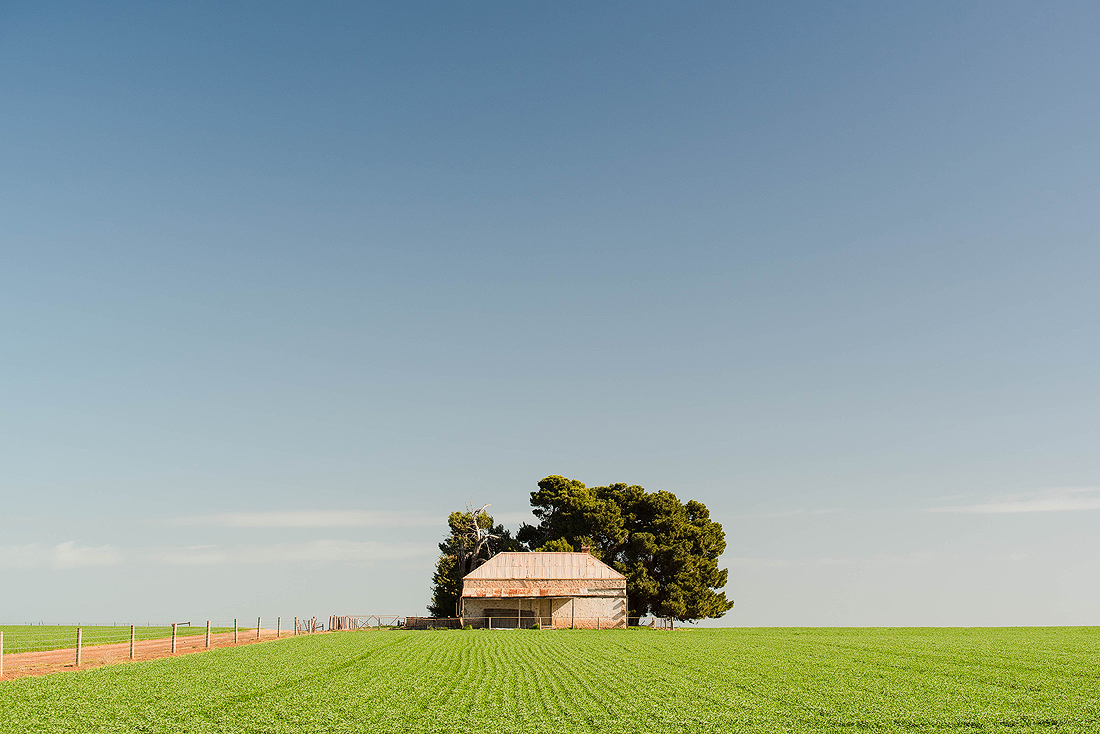If any external thing causes you distress, it is not the thing itself that troubles you, but your own judgment about it. And this you have the power to eliminate now.
Henri Cartier-Bresson wrote in 1952 that the natural landscapes featured by Ansel Adams, devoid of any human presence, were not a worthy subject for photography.
This criticism was echoed by urbanites in New York who labelled some of Adams’ work as misanthropic, bleak, cold and so remote it had the potential to provoke terror.
“There is a person in every one of my photographs”, Adams would retort years later, perhaps understanding that city-dwelling critics would never understand his message.
Van Gogh, Picasso, Cézanne and Warhol were also subject to intense criticism at various stages during their careers.
Criticism can be a cruel beast, cutting right to the very core of our being. Some do everything they can to avoid it.
But we must welcome criticism with open arms.
Creation and criticism go hand in hand. And, as we have seen, even the best artists of our time have not been immune.
How do we push through the fear and anxiety that criticism generates?
How do we tame the beast, or at least make room for it?
Stoicism – a practical philosophy teaching us to remain steadfast in the face of adversity and appreciate the brevity of life – can point us in the right direction.
For a more detailed primer on Stoicism, click here.
Otherwise, read on to discover a few ways that this ancient philosophy may be able to help you.

1. Control the controllables
There are things which are within our power, and there are things which are beyond our power. Within our power are opinion, aim, desire, aversion, and, in one word, whatever affairs are our own. Beyond our power are body, property, reputation, office, and, in one word, whatever are not properly our own affairs.
When former slave Epictetus sat down to write his manual on Stoicism, one of the first things he mentioned was the dichotomy of control. Basically, there are things in our lives under our complete control and things that aren’t.
The criticism we sometimes receive as photographers is out of our control. The way we react to criticism, however, is a different story.
If the ancient Stoics knew anything well, it was criticism. Marcus Aurelius was the Emperor of Rome, so he was no stranger to the sort of backlash modern world leaders face.
He had to deal with all manner of people, and no doubt some were very unpleasant. In dealing with their unpleasantness, Marcus reminded himself that the only thing he could control was his own unpleasantness:
It’s silly to try to escape other people’s faults. Just try and escape your own.
Seneca was also a wealthy and somewhat powerful Roman Stoic philosopher. He was an adviser to the tyrannical emperor Nero, accused among other things of murdering his mother and brother. Nero’s antics combined with Seneca’s penchant for fine living frequently put him at odds with the very Stoic principles he espoused.
He who craves riches feels fear on their account. No man, however, enjoys a blessing that brings anxiety; he is always trying to add a little more. While he puzzles over increasing his wealth, he forgets how to use it. He collects his accounts, he wears out the pavement in the forum, he turns over his ledger — in short, he ceases to be master and becomes a steward.
When someone criticises our work, we would do well to remember the imperfect, contradictory nature of the world. We have probably criticised others multiple times, acting from the same place of fear or ignorance as those who criticised us.
Controlling the controllables is something we hear all the time, but applying it in practice can be difficult.
Nevertheless, Epictetus said we can either want things that are up to us, or we can want things that are not up to us.
Which do you consider has the best long term potential for happiness and contentment?
When someone criticises our work or the way we go about our photography, it is pointless to get upset about it. We do not control other people or their reactions.
To foolishly pine for a utopian society where everyone holds identical opinions is a waste of time and in any case, would lead to a very dull society indeed.
Determine what is under your control and then act accordingly
Criticism is inevitable, so why not meet it with kindness, compassion and an open mind?
In reacting this way, we become free of the emotional knee-jerk reaction. We choose our response and control what we can control.
We realise people are imperfect, from the wealthiest Roman emperors to the most humble amateur photographers.
Although we won’t always share opinions or beliefs with others, we do share a common humanity.
Invite criticism to your door by sharing your unique view of the world through photography.
This way, you’ll have an impact. You’ll stand for certain things – however polarising – that others will inevitably choose to accept or reject.

2. Meet discomfort with indifference
Learn to be indifferent to what makes no difference.
Indifference gets a bad rap, but a little bit of indifference never hurt anyone.
The Stoics defined indifference as being impervious to the negative opinions of others. But indifference can also be used to detach from discomfort.
Terrified at the prospect of getting up before dawn to shoot the sunrise? Accept risk as a part of life, and that cold fingers and tired eyes are the prices you pay for beautiful light.
Striving to produce unique, creative and meaningful work? Accept that the very pursuit of your individuality virtually guarantees criticism.
Indifference is freedom. The indifferent photographer understands the prerequisites for free, creative photography and importantly, makes it happen.
The Stoic Cato the Younger made a point of deliberately going against the prevailing sentiments of his time.
When purple was in, he made a point to wear darker colours. When custom dictated that ancient Romans wore shoes and a tunic in public, he made a point to wear neither in all sorts of weather.
In this apparent act of rebellion, Cato was not trying to start a new fashion trend or be deliberately obtuse. Rather, he did things which would trigger the disdain of others so he could meet discomfort with indifference.
Set aside a certain number of days, during which you shall be content with the scantiest and cheapest fare, with coarse and rough dress, saying to yourself the while: “Is this the condition that I feared?” It is precisely in times of immunity from care that the soul should toughen itself beforehand for occasions of greater stress, and it is while Fortune is kind that it should fortify itself against her violence.
Photographers could learn a thing or two from Cato the Younger.
Find something about your creative process that makes you uncomfortable and then practice it repeatedly.
It might be a new location or a new technique. It might be continuing to use Hoya when everyone else is using Lee or NiSi.
The avoidance of discomfort can also consign our most authentic photographs to the technological dungeons of hard drives and memory cards.
But we should never, ever use current trends to judge our work.
Too many photographs never see the light of day because they aren’t trendy. They never get a chance to stand alone or tell the world about the photographer who made them.
Photographers who conform to trends have to work exceedingly hard to keep up the facade. Eventually, they become fatigued, unfulfilled and artistically directionless.
Become well acquainted with discomfort. Meet it with indifference.

3. Keep the big picture in mind
It is not that we have a short time to live, but that we waste a lot of it.
There is no getting around the fact that death comes for all of us.
Death, I believe, is the great equaliser. It levels the playing field and gives us a point to push off from.
Importantly, it trivialises moments in our lives where we think the world is crashing down around us.
If someone criticises or rejects our photography, it only reflects poorly on us if we choose to react to it.
We will (if we are lucky) live to old age and have a multitude of battle scars to show for it.
We will love, suffer heartbreak and experience the death of friends and family.
During our final days on this Earth, criticism of the corner sharpness of our 17-40mm or our tendency for slightly skewed horizons will be the last thing on our minds.
Brief is man’s life and small the nook of the Earth where he lives; brief, too, is the longest posthumous fame, buoyed only by a succession of poor human beings who will very soon die and who know little of themselves.
We are more likely to contemplate whether our photography was an accurate representation of our true selves. Whether we overcame our dysfunctional egos and our fear of rejection and truly found joy in our photography.
We will not live forever, but as Seneca says, many of us act as if we will.
When you find yourself acting out of fear of criticism, ask yourself whether these actions are more important than making the most of your short life.
Conclusion
As humble photographers, we are unlikely to reach the lofty heights of Ansel Adams or Paul Cézanne and the criticism that such heights entail.
We are even more unlikely to face the sort of prolonged inertia the powerful men of Ancient Rome endured.
But we will be subject to criticism all the same.
We must always remember we have the power to choose how we react. Using the dichotomy of control, we learn how to best direct our energy and focus on what matters.
Remember that this power is not an ability reserved for the ancient Stoics, who, by their own accounts, were no more perfect than the people they led.
Criticism can also lead to creative stagnation. By avoiding the discomfort that criticism creates, we sacrifice our self-expression and become preoccupied with pleasing others. As a result, we lose the ability to be ourselves and connect with people naturally drawn to our work.
Whenever we are afraid to release something to the world, a healthy dose of big-picture thinking always helps. Be the sort of person that your future geriatric self would be proud of.


